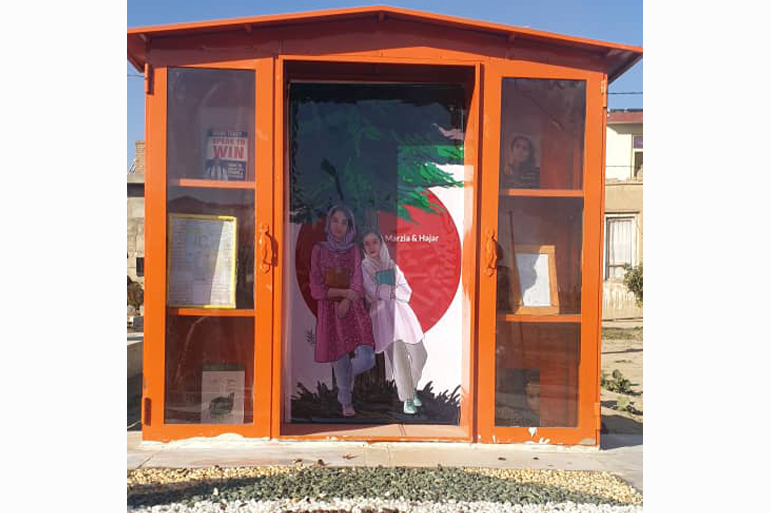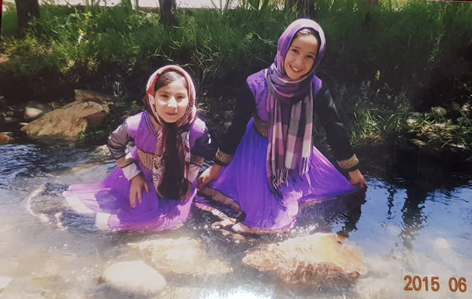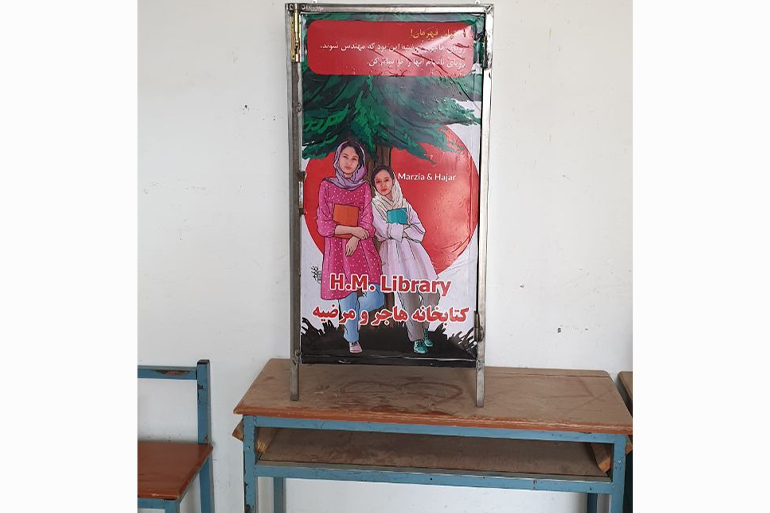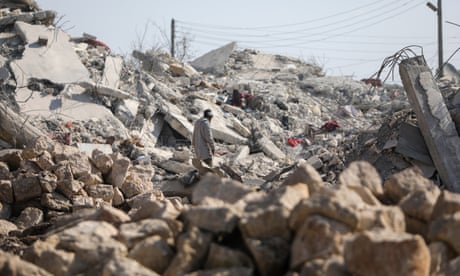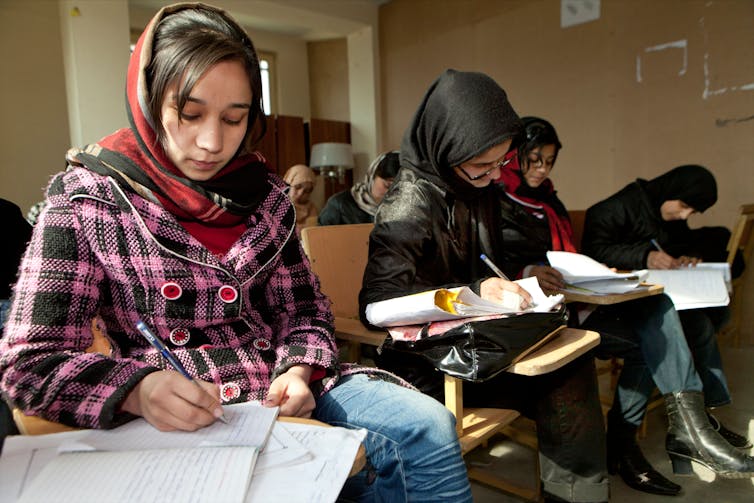A large number of Taleban fighters have moved to Afghanistan’s cities since the movement’s capture of power, many of them seeing life in the city for the first time in their lifetime. These fighters, many of whom are from villages, had lived modest lives, entirely focused on the war. Their circumstances have changed entirely since the Taleban’s victory. Guest author Sabawoon Samim has interviewed five members of the Taleban who have come to live in Kabul, a city they had seen as being at the heart of the ‘foreign occupation’ with its ‘puppet government’ and a population degraded by Western ways. How have they found the actual Kabul and its people, and what do they think about having to earn a living for the first time, keep office hours and live in a city full of traffic and millions of other inhabitants?In the aftermath of seizing power in Afghanistan in August 2021, a huge number of Taleban foot soldiers rushed to the country’s capital, Kabul. For many, born into rural families and with their adult lives spent primarily on the battlefield, it was the first time they had come to the capital. They had not even been born or were still children when the Taleban’s first emirate fell. Even their seniors, who had experienced life in a major city like Kabul, would find the Afghan capital of 2021 a very different place to when the Taleban had last ruled there – the ruins left by the civil war had long ago been re-built, the city itself had become vastly bigger and the population increased manifold. Some of those newcomers to Kabul have settled in the city and we wanted to find out how they had experienced this sudden shift and what they thought of Kabul – and Kabulis.
To this end, the author conducted in-depth conversations with five members of the movement about their new, post-takeover life. They ranged in age from 24 to 32 and had spent between six and 11 years in the Taleban, at different ranks: a Taleban commander, a sniper, a deputy commander and two fighters. They were, respectively, from Paktika, Paktia, Wardak, Logar and Kandahar provinces.
All the interviewees had spent their formative years within the Taleban, typically joining as teenagers. Following the fall of the Islamic Republic, they had secured jobs in the new government. Two were appointed to civilian roles, the other three to security jobs, one in the Ministry of Interior and two in the armed forces. All are now living in Kabul, without their families, and only return to their home provinces during vacations. Four out of the five interviews were conducted in October 2022 and the last in November, all face-to-face in Kabul. The interviews have been lightly edited for clarity and flow.
The interviewees refer to ‘the fatha’, pronounced fat-ha. This is the Arabic word for conquest or victory, used for when new lands are ‘opened up’ to Muslim victors, or lands ‘recovered’ from non-Muslims. The interviews also refer to the war as a jihad and themselves as mujahedin. They speak of going on ‘tashkils’, which are similar to deployments – specific periods of time when they were away fighting.
In the Taleban hierarchy, fighters were organised into ‘groups’, bands of a few dozen men under a sub-commander, known as a ‘sar-group’ (head of the group). Several groups formed a ‘dilgai’, headed by a senior commander, known as a ‘dilgai meshr’. He was directly associated with the Emirate’s Military Commission.
Throughout the text, the interviewees refer to their old commanders as ‘Mawlawi Sahib’, as a mark of respect, combining the term used for an advanced religious scholar with the word for ‘sir’.
Omar Mansur, 32, Yahyakhel district of Paktika province, married and father of five, head of a group
I was born in North Waziristan but spent my childhood in Yahyakhel. I started my education in the village mosque and then moved to a small madrasa that was built during the first emirate in the neighbouring district. At the time the Americans invaded, I was only 11 years old. Because of that invasion and the subsequent indiscriminate bombardments and night raids, I was determined that the jihad against the foreigners was fard [obligatory in Islam]. I had only studied up to wara dawra [12th grade of madrasa] when I abandoned the rest of my madrasa studies, and for the next 14 years or so, I would go on tashkil.
The jihad was already in full swing in our district at the time. I did my first three tashkils in Yahyakhel and then relocated to Kunar province. The rest of my jihad was in various provinces, including Laghman, Nangarhar, Paktia, Paktika and Ghazni. I first became a deputy of our group in Mawlawi Sahib’s dilgai and then its commander.
Praise be to Allah, after the fatha, Mawlawi Sahib introduced me to the Minister of [name withheld] and told him to appoint me somewhere. I was appointed to a grade 3 position as head of office.
I haven’t brought my family to Kabul. The rent of houses is very high for us since our salary is no more than 15,000 afghanis [roughly 180 USD]. It is fully sufficient for Yahyakhel but not for Kabul. As soon as, God willing, I have a good salary, I will bring my family here.
I had never been to Kabul before. We heard from the radio and people who travelled there that it was constructed very beautifully by the Americans and [Hamid] Karzai. But still, you know, it’s not as beautiful as it should have been. The Americans brought untold amounts of money, but rather than spending it on building the city to a higher standard, most of it went into the pockets of [Marshal Qasem] Fahim [the late vice president and Shura-ye Nizar/Northern Alliance military leader], Karzai, and their like. Yet, I assume, it’s the most gorgeous city in Afghanistan. In contrast to Kabul, our Paktika seems very displeasing. It’s like the Karzai government only spent money on Kabul.
What I don’t like about Kabul is its ever-increasing traffic holdups. Last year, it was tolerable but in the last few months, it’s become more and more congested. People complain that the Taleban brought poverty, but, looking at this traffic and the large number of people in the bazaars and restaurants, I wonder where that poverty is.
Another thing I don’t like, not only about Kabul but broadly about life after the fatha, are the new restrictions. In the group, we had a great degree of freedom about where to go, where to stay, and whether to participate in the war.
However, these days, you have to go to the office before 8 AM and stay there till 4 PM. If you don’t go, you’re considered absent, and [the wage for] that day is cut from your salary. We’re now used to that, but it was especially difficult in the first two or three months.
The other problem in Kabul is that my comrades are now scattered throughout Afghanistan. Those in Kabul, like me, work from 8 AM to 4 PM. So, most of the week, we don’t get any time to meet each other. Only on Fridays, if I don’t go home, do we all go to Qargha, Paghman or Zazai Park. I really like Paghman and going there with friends makes me very happy. Such a place doesn’t exist in the entire province of Paktika.
What I like most in Kabul is its relative cleanness and how facilities have been modernised and improved, the buildings, roads, electricity, internet connection, and so many other things. You can find taxis even at midnight, hospitals are on the doorstep, and schools, educational centres, as well as madrasas are all easily available on every corner of the city. The other positive feature of Kabul is its ethnic diversity. You can see an Uzbek, Pashtun and a Tajik living in one building and going to the same mosque.
Some people have a very negative picture of Kabul. What I experienced here in the last years, though, is that one can come across the perfect Muslim and the worst. Unlike villages where a lot of people go to the mosque to impress others, people in Kabul go there just for the sake of Allah. Unlike the villages where people endeavour to be called generous, people here do charity for the sake of Allah – people know little about each other and so they don’t need to impress each other.
Similarly, there are plenty of bad and wicked people. They’re morally corrupt, Muslim only in name, sinners. I can’t make up my mind whether there are more good people or bad here, though there are both, and it’s up to you who you interact with. Living in Kabul could have either consequence; it could corrupt a very good mujahed or turn a very bad mujahed into a good man. It all depends on who you socialise with.
Huzaifa, 24, from Zurmat district of southeastern Paktia province, married and father of two, sniper
I grew up in Zurmat. I was around 13 years old when my father enrolled me in a nearby madrasa. I left it without finishing my studies after five years because a friend of mine convinced me to join him in the Taleban. My family tried their best to persuade, at first me to leave the Emirate, and then our commander to expel me from his ranks. They said if I came home, they’d get me engaged to someone. But once someone spends time in the group, leaving that friendly and endearing environment is difficult. There was love, sincerity and above all the thirst for martyrdom. Worldly pursuits were not even a minor part of life at that time. All we were doing was sacrificing in the way of jihad as hard as we could.
I was a lizari [sniper] and spent most of my time in Paktia, only on some occasions going to Khost and Paktika provinces. In the time of jihad, life was very simple. All we had to deal with was making plans for ta’aruz [attacks] against the enemy and for retreating. People didn’t expect much from us, and we had little responsibility towards them, whereas now if someone is hungry, he deems us directly responsible for that.
After the fatha, we moved to Kabul and our dilgai meshr was appointed head of a police district and later head of a directorate at the Ministry of Interior. I, along with a few other friends, were given masuliat (official jobs) in the police district the day we arrived in the city, while other friends were sent to the MoI.
It was the first time I ever saw Kabul. I haven’t seen all the provinces, but people say Kabul is the most beautiful city in Afghanistan. When I joined my group, I was of the idea that Kabul would be full of bad people, but to be honest, in the last couple of years, after we met some of the people living here, I realised I was wrong. Of course, it has plenty of negative aspects, like their support for the occupation, women not wearing proper clothing, youths flirting with girls and cutting their hair in a style even people in America might not adopt, but these are the problems that nowadays exist also in the rural areas.
After we arrived in Kabul, we were stunned by its complexity, its expanse, its size. We didn’t know where to go. Everything was strange to us and of course, we were strange to the local people – to the extent that they were afraid of talking loudly to us. When we came to our hawza [police district] and saw the compound, the weapons and the security measures, it was unbelievable how they’d abandoned such places without firing a single bullet. We were stunned by the cowardice of the [former] army and police. If even a very small number of them had tried to fight us, we couldn’t have made it to Kabul for years, given its complexity and the weapons they had. Praise be to Allah, [the victory] was directly because of His help.
One thing I don’t like about Kabul is that people have moved here from all of Afghanistan’s 34 provinces and among them, a large number of criminals from across Afghanistan have made their way here and turned the city into a hub for their illegal activities. We face a lot of difficulties in eliminating crime, particularly robbery.
And the savageness of people against each other, in particular against women – dozens of women approach the hawza on a daily basis and register their complaints. They’re victims, subject to different forms of brutality. The head of the hawza and all other mujahedin pay special attention to solving their problems. During the first days when women approached us, many mujahedin, including myself, were hiding from them because never in our whole lives have we talked to strange women. In the days that followed, the head of the hawza instructed us that sharia does allow us to talk to them because we are now the authorities and the only people that can solve their problems.
I prefer to live in Kabul. It has its good sides and its bad, in fact, not only Kabul but everywhere has positive and negative features. In Kabul, what’s good is that you have access to every facility. Most importantly, our jobs are here now, and it’s necessary to move our families here as well.
What I don’t like about the city is that it’s like a closed society. People live cheek-by-jowl but don’t interact with each other. This is in part bad, as people don’t cooperate with each other, but also has a positive feature: unlike the village, no one bothers you about what you do, what you wear, who comes to your home and who leaves it. People don’t interfere in your life and don’t talk about you behind your back.
There is another thing I dislike and that’s how restricted our lives are now, unlike anything we experienced before. The Taleban used to be free of restrictions, but now we sit in one place, behind a desk and a computer 24 hours a day, seven days a week. Life’s become so wearisome; you do the same things every day. Being away from the family has only doubled the problem.
I’ve made friends with three guys who are from our province but have been living here [in Kabul] for more than 15 years. We sometimes go to Qargha, Bagh-e Wahsh [Kabul Zoo], Sarobi and Tapa-ye Wazir Akbar Khan. To be honest, every time I go with them, they pressure me to play and listen to music in the car. At first, I was resisting, but now I have given in, with the one condition that they turn it off when passing through security checkpoints because many other Taleban don’t like it, and it’s bad for a Taleb to be seen listening to it.
Although my new friends are from good families and are good lads, there are a lot of bad circles of youths in Kabul who smoke, use drugs and do bad things, so it’s hard for us to become friends with them. Our nature and values differ, and therefore most of our friends don’t make many friends in Kabul because we don’t fit in with them. Despite this, some Taleban have now become friends with such youths and are inclined to do many bad things, such as going hookah cafes [qilun khana].
Kamran, 27, Sayedabad district, Wardak Province, married, father of two, deputy group commander
I graduated from a government school in Sayedabad and then abandoned any other studies for the sake of jihad at the age of 19. This has been my 8th year in the Emirate. Most of the time, the areas our group controlled were in the various districts of Wardak province. I participated in many battles. Sayedabad was a place in which the Americans left dozens of dead bodies. The intensity of Sayedabad battles is well-known throughout Afghanistan.
In the last three years, I was deputy to the commander of our group, responsible for most of the day-to-day activities we dealt with since the head of our group was busy doing other non-military stuff.
During the jihad, the fear of drones followed us like a shadow, and the area where we operated was geographically very small in the early years. When travelling along the road to Ghazni city, we frequently attacked the Americans with RPGs, dashakas [DShK, a type of heavy machine gun] and roadside bombs, inflicting dozens of casualties on them. They then came after us in retaliation. Their drones often bombarded our positions. Everywhere we went, went the fear of drones. Even though the situation changed in the last two or three years [of the fighting] – the Americans and government army [owrdu] completely disappeared from the scene – the danger of drones still affected our movement. In fact, excluding their bombardments, we never considered the Americans and their puppets superior to us, [certainly not] in face-to-face battles.
Circumstances have now, Praise be to Allah, changed completely. We can go wherever we want. There is freedom and liberty in the entire country.
I’d been twice to Kabul before the fatha, once for treatment to a doctor in Baharistan [a neighbourhood in Kabul’s PD2]. Both times, I was in fear of being arrested. At that time, Kabul was occupied, and the police were harassing men if they had a beard. During one of my visits, I was going from the Kampani area to Kot-e Sangi, and our bus was passing through a checkpoint near the Kampani bazaar. When they saw me, they immediately stopped the bus and started asking me questions. I was about to be captured but, Praise be to Allah, I deceived them. From that day, I started hating Kabul. However, you see, I’m now here in Kabul, but it is not the same Kabul I visited before. It’s now liberated and belongs to us, not the Americans.
I was appointed to a job in the Ministry of Interior. I’m sort of happy with my job but often miss the time of jihad. During that time, every minute of our life was counted as worship.
After the fatha, many of our friends abandoned the cause of jihad. Many others betrayed the blood of the martyrs on which foundation this nizam [the government] is built. Nowadays, people are fully busy gaining wealth and fame, more and more, in this worldly life. Previously, we were doing everything for the sake of Allah, but now it’s the opposite. The first priority of many is to fill their pockets and become famous.
If you ask me why I’m unhappy in the aftermath of the fatha, it’s that we immediately forgot our past. Then, we had only a motorcycle, a mukhabira, [a type of Walkie-Talkie] and a mosque or madrasa. Now, when someone’s nominated for a government job, he first asks whether that position has a car or not. We used to live among the people. Many of us have now caged ourselves in our offices and palaces, abandoning that simple life.
I don’t interact with Kabulis much, given that here, the ministry is full of my fellow Taleban. Anyway, sometimes I sit with the employees of the former regime who still come to their jobs. They show themselves to be very good people and sincere to the Emirate, but I can tell you that, in reality, they hate us. I don’t exactly know why, but I’ve identified some possible reasons this past year. First, these employees were ‘doing business’ in the ministry, making illegal wealth through corrupt practices. Second, the Americans invested in them heavily, and they became so Westernised they now hate our real Afghan culture and Islam. When the Emirate came, their illegal business and corruption vanished entirely and they have nothing but their salaries. They are no longer able to make millions of afghanis. So, you tell me, why shouldn’t they hate us?
I’m very concerned about our mujahedin. The real test and challenge was not during the jihad. Rather, it’s now. At that time, it was simple, but now things are much more complicated. We are tested by cars, positions, wealth and women. Many of our mujahedin, God forbid, have fallen into these seemingly sweet, but actually bitter traps. They forgot their old comrades on whose shoulders they secured victory and instead seek the praise and approval of sycophants. The old, the real mujahed doesn’t know the meaning of sycophancy. So they are sidelined, while their places are filled by people who, until the past year, were against us in so many ways.
I’ve not considered living in Kabul [permanently with the family]. Of course, it’s beautiful from the outside, but it lacks tranquillity. In the village, people are with you in good times and bad, in life and death. You have a community. You sit together with people, talk over problems and cooperate with them. In Kabul, it’s the opposite. People don’t have time to even give you directions, let alone help you, for example, with a wedding ceremony. People are hurrying and running after this worldly life. They feel like, if one day they don’t go to work, they would die of poverty. For me at least, I belong to the village, and I can hardly imagine surviving without it.
Abdul Nafi, 25, Logar province, Baraki Barak district, married, father of two, fighter
I grew up in Baraki Barak. I studied school up to sixth grade and then continued the rest of my education in a madrasa up to 12th grade, joining the Taleban from there – almost seven years ago.
At that time, we were doing jihad, it was a holy path and gave us real delight. During jihad, you couldn’t have known the difference between a commander and a foot soldier like me. We sat together, we talked without any inconvenience, and they were sympatric towards us. Our superiors fought shoulder-to-shoulder alongside us, and we all wept together for our martyrs. It was an environment of sacrifice. We fought the war with high morale and determination.
However, all that changed after the fatha. I am myself a mujahed, but now I struggle to get to see a small director, let alone a deputy minister or minister. This isn’t true of all of them, but many of the leaders have turned their backs on their comrades of the hard times.
On the second week of the fatha, I made it to Kabul. I hadn’t been there before. It seemed a very big city and I worried about how we’d all find our way around. Now, I might better know the streets of Kabul better than many Kabulis. I go home once a month, sometimes twice. In the village, I look like a haji because when a haji comes back from pilgrimage, his skin looks soft and his face pale and I’ve, similarly, come back from pleasanter weather and the cleaner environment of Kabul.
In the first days [of our coming to Kabul], our dilgai meshr was assigned to a key position in the Ministry of [name withheld]. He told two other comrades and me to be his guards. The rest of our dilgai was strewn about in Kabul and Logar. Mawlawi sahib is a very kind man and hasn’t abandoned his old friends. For the first five months, I was with him with no official status. He paid some of my expenses from his own salary. After that, he told me he’d appoint me to a job in the ministry and registered the two other friends as official guards. He said I’d easily learn how to work. Thus, I was appointed to a grade 4 position as executive director, and in the meantime, I continued my job as his guard. I live with him in his house. It’s a big villa that [a senior leader, name withheld] has given him. He’s always telling me to bring my family and live on one of the floors. But I’m hesitant because of the cost.
When I started my job, I didn’t have a clue how to deal with the tasks. Mawlawi sahib told me to take a computer course and an English course. Almost four months ago, I started both courses near our Ministry. I learned many computer programmes during this period. Not only that, I quickly learned the tasks related to my job. All the staff, including Mawalwi sahib, have been happy with my work. People blame the Emirate for all the professional people fleeing the country, but when I see the employees in our ministry, they’re neither professional nor educated. All of them were appointed through wasita [connections] and knew little about how to manage and do their jobs. You might not believe me, but I now do my work better than many of them. You might not believe what I say about learning the various aspects of my job and mastering Kabul streets, but let me tell you a fact about the Taleban: We are very smart and intelligent, and we are fast learners.
I sometimes miss the jihad life for all the good things it had. Similarly, in the beginning, I yearned for the village, but I’ve now become accustomed to my new circumstances.
In our ministry, there’s little work for me to do. Therefore, I spend most of my time on Twitter. We’re connected to speedy Wi-Fi and internet. Many mujahedin, including me, are addicted to the internet, especially Twitter.
In those first days, when we sometimes came out of the ministry to Macroyan bazaar, there were a lot of women wearing indecent clothes. We anticipated they would wear hijab, but after the initial days when women feared the mujahedin a lot, their attire has actually become less proper.
Now, they’ve become assertive to the extent they’re entirely heedless of us. Many of our friends say that, apart from us coming and replacing the police and officials of the former regime, little has changed from the Republic’s time in Kabul. During the first few days, many of my comrades and I hardly dared to make our way to the bazaar because of them [women]. We hoped the situation would soon get better, but it didn’t. Even worse, one of my classmates in his computer course is also a woman. We sit in the same classroom. Although I despise women that don’t wear proper clothes, nonetheless, I can’t turn my back on the bazaar or my class because of them. If they’re unashamed, let us also be so. This is the only thing I never imagined a Taleb would encounter in his lifetime.
In the first days, everyone feared us and we had the chance to change many things, but I think in the last year, people observed us, interacted with us, and now no longer fear us because they understand that Taleban are neither Punjabis nor any other sort of strange human being.
What I dislike about Kabul is its traffic and what I fear is its thieves. We have never seen this much congestion, and in comparison to Kabuli drivers, we can hardly make our way through the streets. I don’t know how people live in such a mess. The other thing is Kabul’s thieves. Although Taleban have had the good fortune to capture [many], rather than diminishing, they increase in number, day by day. I keep my pistol on my person all the time after two of our comrades were robbed.
Abdul Salam, 26, Dand district of Kandahar province, married, father of three, farmer
I joined the Taleban when I was 20. At the time, I was helping my father in farming and only joined the Taleban after my elder brother was martyred. I studied neither at madrasa nor at school.
I did all of my tashkils in Dand, Maiwand and Shah Wali Kot districts [in Kandahar province]. The time of jihad was very good for us. I myself, for example, was not responsible for contributing to the livelihood of the family since my other brothers took care of it. They did so because they understood that jihad is obligatory.
Not only this, but at that time, people would also do their best to help, shelter and buy us clothes, shoes and petrol for our motorcycles.
However, everything has changed since then. The family wouldn’t tell you blatantly to bring home your entire salary so they can feed your children because it’s no longer a jihad, and you should take that on your shoulders, but you could feel from their behaviour that this is exactly what they mean. Furthermore, when sometimes I want to come from home to Kabul, for example, and I don’t have a vehicle to go with, I come to the nearby road so a passer-by could pick me up and drive me to Kandahar. But once an old man with his old Corolla stopped, I thought he did so to pick me up, but he didn’t. Rather, he mockingly told me that now the entire government is in your hands, so you no longer deserve help, adding that now it’s your turn to pay back all the help we have given you.
Whatever happens in Afghanistan, people blame us. Even a minor misdeed by us makes it to the media that the Taleban are doing this and that. It’s like the cameras of the entire world are watching us.
I came from Kandahar almost two months after the fatha. Our friends who’d arrived before me were given control of a police district. I was also given a job there. Currently, I, along with a few other mujahedin, man checkpoints on the road.
Around my second month, I became fed up with this life and intended to leave the Emirate and start a small business. My friends drew me back from that, saying: If we all leave, who will run the government and what will happen to the Emirate? Living in a place where you don’t understand the language and don’t fit in with its environment isn’t easy, especially for a mujahed. Praise be to Allah, it’s now more than a year since I’ve been in Kabul. I only go to Kandahar every four or five months. Unlike others, the people of Loy Kandahar [Greater Kandahar] are very resistant to being away from family.
I hadn’t visited Kabul before. I thought Kabul would be a city full of evil. In fact, it’s not as evil as we assumed. I don’t know if all that was eliminated by the mujahedin or if we were mistaken about that from the beginning.
In Kabul, it’s very difficult for us to live. When we sometimes go to Haji mullah sahib’s [referring to a senior commander] home, it’s a very small place with an inflated rent. Unlike homes in Kandahar, people only have three rooms in a pocket-sized apartment. There is no separate guestroom.
Although now we can go everywhere without fear, the war is over, and an Islamic system is in place, it’s still difficult not to miss the days of the jihad. At that time, we weren’t under strict supervision, we weren’t curbed because the Emirate needed us, and as a consequence, they provided us with more freedom. Now, on the contrary, they don’t need us as much as they did at that time. Besides, they pay us money. There is a proverb in our area that money is like a shackle. Now, if we complain, or don’t come to work, or disobey the rules, they cut our salary. Unlike jihad, now particularly, when the battles are long gone and the risk is zero, the Emirate could find countless people to work with them in return for a salary.
I spend most of my time with my fellow Taleban. On Fridays, we go on mila [picnic] to Qargha, Paghman, or other places. From Saturday to Thursday, we’re busy manning the checkpoints day and night, but I’m trying to get a job in Kandahar.
What do the interviewees’ experiences of their new life tell us?
At the end of the war, the gravest risks to which our interviewees had been exposed, of bombardments and night raids, evaporated. They were the winning party and, as such, these rural Taleban fighters were rewarded with government jobs and significant privileges. Yet, victory also precipitated many difficulties for them. City life is so absolutely different from what they were used to, presenting unexpected problems but also unexpected delights. Three of our interviewees said they were going to bring their families and live permanently in Kabul, whereas two said they would leave them in the village and are actually hoping to be able to leave Kabul themselves at some point.
Broadly speaking, all of our interviewees preferred their time as fighters in what they considered a jihad. Then, their lives were simple. They had few responsibilities or complications. Everything they faced was associated with war and the battlefield and their behaviour was bound by the strict norms of the madrasa. Our interviewees perceived the jihad as a religious duty and living such a life or dying in this way was deemed a form of worship and an honour.
Integrating into the formal order of government administration has turned into a major headache for our interviewees. The old structures with which they were familiar and comfortable vanished with the takeover and the dynamics of their lives changed utterly. Interviewees remarked on how their leaders and commanders, who used to live among them, have now shut themselves away in far-off offices. They also feel the degree of sincerity shown by fighters towards each other has faded. They lost many of the freedoms they enjoyed throughout the insurgency. The shift to working within government structures has forced them to adhere to official rules and laws they never faced before. They find ‘clocking in’ for office work tedious and almost unbearable, although some said they were now getting used to the routine.
The trouble that victory has brought to their lives does not end there: they also now need to earn money to support themselves and their families, something that was not needed during the insurgency when their own expenses were covered by the movement and they were entirely exempted from family needs. Now, Taleban must provide for themselves and contribute to the family finances. The jihad, a religious duty which exempted them from such everyday concerns, is over: they now have to work for the survival of their families like everyone else. The sudden reversal of roles experienced by Taleban fighters, from being able to foment popular discontent against the corruption of the Republican government to being cast as the cause of the country’s current economic woes has made a deep impression on the respondents. Three of them mentioned this in their interviews.
For our interviewees, despite all these problems and hassles, life in peacetime Kabul has had its pleasing sides. Interviewees were delighted by the city’s sights and development and nearby places of natural beauty like Paghman and Qargha. They thought Kabul far better than their native provinces in terms of development and modern facilities. Contrary to their assumptions, most had been surprised to find both good and bad people living in Kabul as in the rural areas, and at least one pointed out that the social ills that nowadays exist in Kabul also exist in Afghanistan’s villages.
The social influence of living in an urban context on these Taleban is noticeable. Our interviewees had a negative picture of Kabul before the takeover, but living in the city has changed their perceptions. Their interaction with women has come a long way from what one could expect, given the Taleban movement’s conservatism. Our interviewee with the female classmate, for example, spoke to the author in the company of a fellow Taleb who, after the interview, jokingly told him, “Why didn’t you tell him the story about when your female classmate started a conversation with you, and you talked to her quite comfortably?” On the streets of Kabul, Taleban fighters have often given interviews and spoken to female YouTubers, an act that would have been completely forbidden throughout the movement’s past (see for example this, this and this video).
Some of our interviewees, and other Taleban, have slowly begun to look critically at their own attitudes and the way they dress and conduct themselves in public. One Taleban fighter told the author in early July 2022 that “I don’t know when we [Taleban] will learn to be like normal people. The style most of us have in Kabul [long hair and a style of wide, baggy piran tomban] is very strange at this time and in this situation. The time this style looked good is long gone and we need to adjust to these new circumstances.” The reduction in the number of Taleban carrying AK-47, M416 and M16 guns in bazaars is possibly also stemming from such considerations.
The Taleban Ministry for Promoting Virtue and Preventing Vice has been vehemently attempting to keep former fighters occupied with religious studies. This has been successful to some degree, but the bulk of the fighters are now both away from the strict environment of the madrasa and the movement’s rural bastions. Not only that, but working in ministries has meant their interest in religious studies has suffered significantly, with a considerable number registering themselves instead in English and computer classes, which they deem necessary if they are to strive in their new roles.
What may have prevented Taleban from undergoing a greater degree of change in attitudes and public behaviour is just how strong the norms established in the madrasa and the insurgency still are. This is in part due to the strict bonds of friendships the Taleban have built up. They still live and interact mostly with fellow Taleban and so there is a lot of mutual reinforcing of their social norms.
The conservative notions of our interviewees, who have interacted with non-Taleban, have eased a great deal. External influence and interactions with actual Kabulis have already made inroads into their thinking. However, the author has also encountered Taleban who have remained strictly within their old circles and say they dislike the city and condemn its inhabitants for not living in accordance with what they consider true Islam. They are also worried about comrades ‘back-sliding’. One scholar recently warned a gathering at a mosque in Kabul attended by the author that: “The mujahedin need to be ideologically and intellectually strengthened,” so, “they don’t fall into the traps of this shar ul-qurun [the worst of times.].” Another Taleban-affiliated mullah at the same gathering said, “The possibility that we could go in the wrong direction is now at its highest, God forbid. I see many mujahedin turning away from the cause of jihad and sharia and instead chasing worldly pursuits.”
Maybe, some Taleban have wondered, should smart phones and the internet be banned for their former fighters, given they are, as claimed in an audio recording from one cleric that is circulating, among the biggest sources of “corrupt[ion] among the ranks of the mujahedin.” As to the reason why some Talebs from Kandahar prefer to stay there rather than getting jobs in the capital, according to a commander from that city who spoke to the author in December 2021, it is down to their concerns about “the immoral environment of Kabul [which] is very harmful to the faith of everyone, especially the mujahedin.”
Victory for the Taleban in August 2021 brought Afghans who had had little to do with each other suddenly face-to-face as the winning party took power in the cities. Rural and urban, fighters and civilians, madrassa and school-educated, victors and those they now rule, women outside in public with ‘open’ faces and men whose female relatives live in purdah are all now mixing. Among some Taleban, the desire to keep the movement away from ‘city influences’ and indeed wrench the entire urban society ‘back’, as they see it, to true Islam, is strong. At the same time, others have come to have a more nuanced view of city life and a more realistic appreciation of its good and bad sides.
Edited by Kate Clark and Fabrizio Foschini
REVISIONS:
This article was last updated on 3 Feb 2023
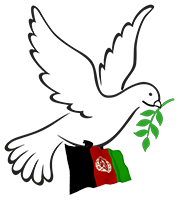 Afghanistan Peace Campaign
Afghanistan Peace Campaign